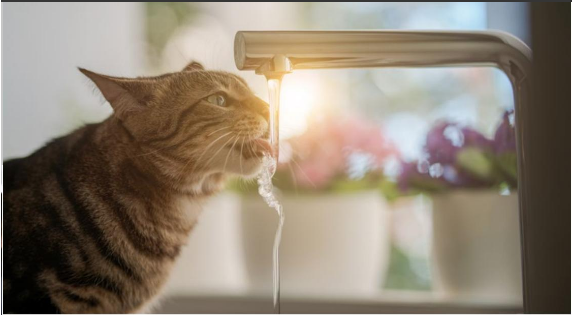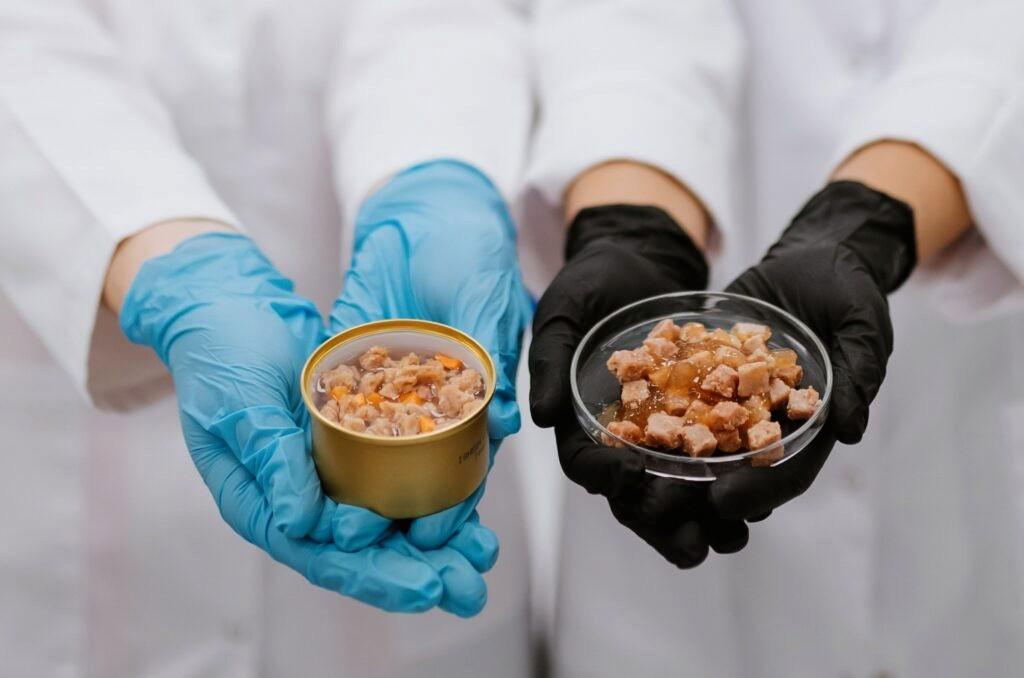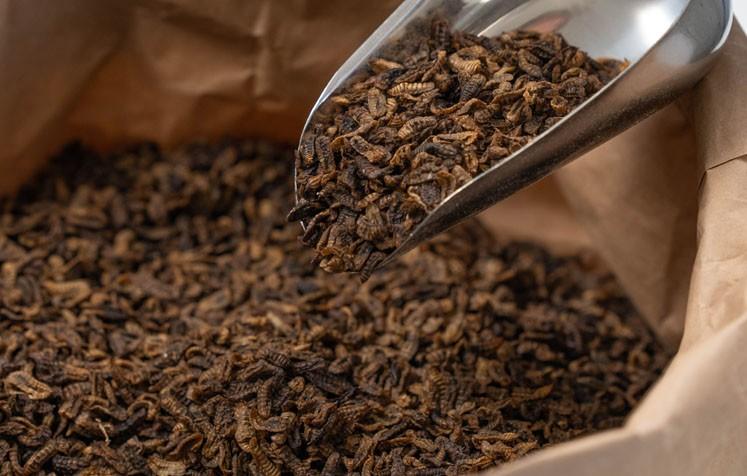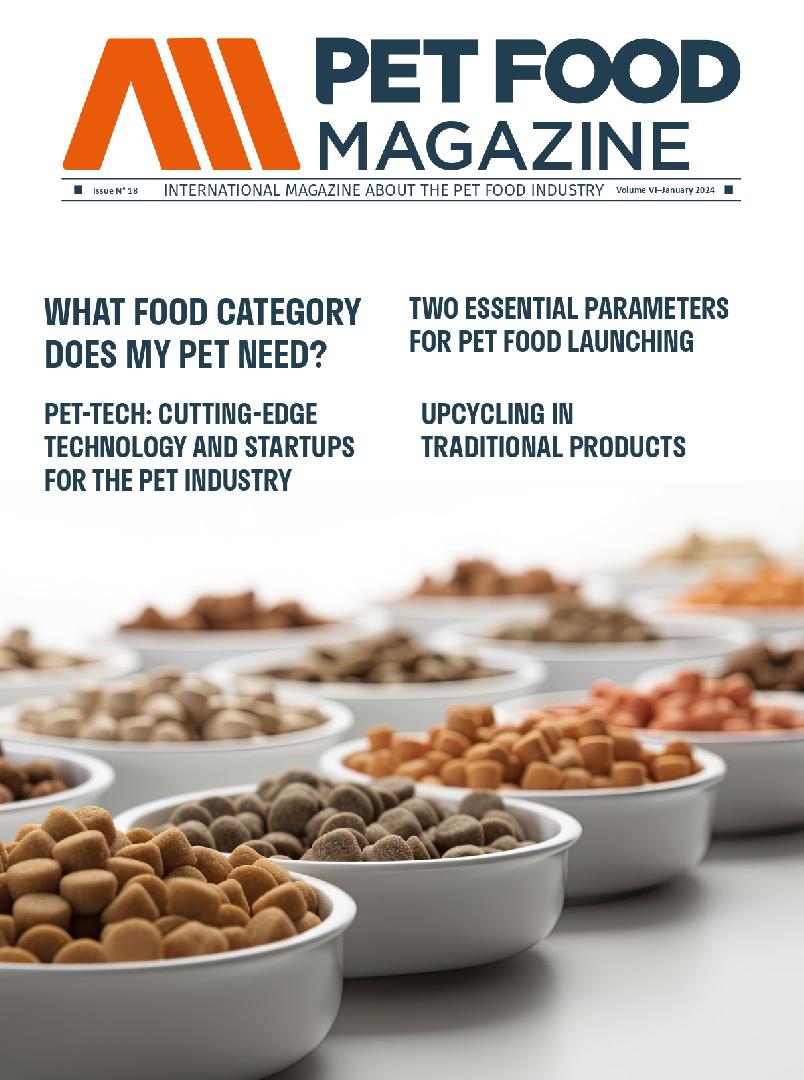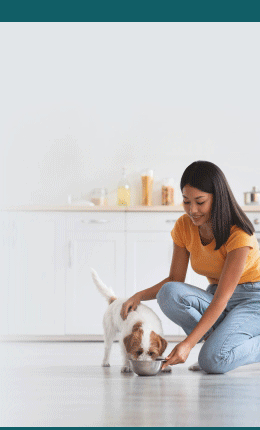Excess consumption of water may also be indicating some pathology or collateral effects of some medication as part of a treatment, among other causes. There are also some dogs and cats that are not good 'water drinkers' and their consumption should be encouraged to avoid severe dehydration that ends the life of the pet. This article summarizes the importance of water for the physiological functions of dogs and cats and its contribution to homeostasis, the main causes that alter its consumption, quantities that should be supplied according to the physiological state and activity level and some recommendations for stimulate the consumption of this important nutrient.
Definition
Chemically, water is the combination of hydrogen and oxygen, which are united at a rate of 2 hydrogen atoms and one oxygen (H2O). Water is vital for life and is considered the most important nutrient of all (1). Water is the most abundant component in the animal's body, varying between 40 to 80% of its total body weight. The percentage of water varies between species, condition and age. Generally, lean body mass contains between 70-80% water and 20-25% protein, while adipose tissue contains 10-15% water and 75-80% fat. The younger the animals contain more body water and the overweight and / or obese animals have less water in their body compared to non-overweight animals. Once the animals mature, they require proportionally less water per unit of body weight and therefore have a lower urinary water loss. Furthermore, adults have less surface area per unit of body weight resulting in less evaporation from the skin.
Function
Water is an essential nutrient, but perhaps the least discussed with respect to the other dietary requirements such as protein, energy, vitamins, etc. Contradictorily, it is the nutrient that is required in the greatest quantity (Figure 1). Water is offered daily separately from food and is also included in it, as we must not forget that food contains water and is not 100% dry matter. In addition, when water is supplied in sufficient quantity, healthy cats and dogs can self-regulate their consumption and satisfy their nutritional needs. However, its contribution as a nutrient to the total diet is largely ignored, unaware that it is a vital ingredient for the functioning of body cells and body fluid.
The functions of water in pets are quite a few, but among the most important, it can be mentioned: it is a solvent for most extra and intracellular chemical processes, the main component of tissues and fluids, the main component of blood, a facilitator for digestion and absorption of nutrients, thermoregulation, excretion of waste in urine and feces, moistening of the lungs, protects and lubricates internal organs such as joints and supports the functioning of the nervous system.

Figure 1. The six basic nutrients. Carbohydrates, fats and proteins are the nutrients from which energy comes, but they also serve as structural components. Kg: kilograms, d: day, mcg: micrograms, mg: milligrams, EAA: essential amino acids.
Regulation of water consumption in dogs and cats
The loss of water in both dogs and cats occurs mainly as a function of respiration, urine production and feces. While water is constantly being lost throughout the day, access to water is periodic.
The sensation of thirst is correlated with the body water content and the osmolality (amount of particles dissolved in a liquid) of the plasma, although this sensation cannot be stimulated unless there is a slight degree of dehydration.
How much water should a dog drink per day?
A simple rule that we could easily memorize would be one ounce per pound of the dog's weight. That is, almost 30 mL of water for almost 454 g of the animal's weight. A dog weighing 4.5 kg should drink 300 mL of water per day (4). However, this may vary with the physiological state, activity level or the presence of some pathologies. Also, dogs that consume kibbles drink more water than those that include canned or semi-moist foods in their diet.
Although there are water requirements for dogs and cats, to date the optimal volume of water consumption or the impact that hydration may have on the health of our pets is not known with a high level of precision. Additionally, all nutritional recommendations for pet food declare that there must always be fresh water available at will, seeking a state of eu-hydration (hydration in optimal balance). Daily water consumption requirements have traditionally been reported in mL / kg (milliliters per kilogram) of body weight (PC), mL / kg of dry matter consumed and the relationship between water and calorie consumption measured as mL / kcal (kilocalories ) of metabolizable energy (ME) consumed. All these methods rely on water from different sources such as food moisture, direct water consumption and metabolic water. In general, the water-calorie intake rate for healthy dogs has been estimated at 1.0: 1.0 mL water: kcal of ME. However, this metric can change dramatically over time (weeks to months) with different levels of physical activity such as exercise or work while maintaining the same CP. However, some exceptions have been reported for dogs exercising long-distance runs in extremely cold climates. As a general rule, a sport dog, its water requirements are 2.4: 1.0 mL water: kcal of ME.
It has recently been reported in humans that small changes in body hydration status (less than 2%) impact cognitive status, mood and performance during exercise. It has been speculated that, in working dogs, mild dehydration may affect tasks such as search and rescue of people, detection of narcotics and explosives, hunting and sports, and biomedical detection services including COVID19-positive patients (6). There is an imminent need to know much better the amount of water that can potentiate the level of hydration for pets and working dogs in different stages such as rest and work-related tasks, ensuring optimal health and performance. Even when the activity is between little and moderate, the hydration status is not the same during the day due to the routines of dogs and cats, sometimes generating states of hypohydration with respective increases in serum and urinary osmolality just from minutes to hours.
Some diseases have been associated with dehydration states such as hyperglycemia, diabetes progression, high risk of chronic kidney disease, recurrence of kidney stones, and possibly a high contribution to hypertension and lower urinary tract disease.
How much water should a cat drink per day?
Compared to dogs, cats drink less water. In general, an adult cat consumes between 150 mL and 300 mL ounces of water per day, depending on size, activity level, type of food, and other factors such as health and environmental temperature. If the cat is fed kibble, its water consumption will be closer to 300 mL per day and if it is fed canned food, it will be closer to 150 mL per day. Cats may be drinking too much water, which can be detected by a greater number of visits per day to the litter box or because the cat is passing through the fountain several times a day or playing with it already empty. The causes that make the cat drink too much water are the same as dogs, however, the most common are: kidney disease, diabetes, cancer and hyperthyroidism. If you notice a large amount of urine in the litter box or even see urine in the water container, you should immediately consult your veterinarian.
How to know if the pet is consuming enough water?
Checking the pet's hydration status is very important, which is evidenced by a good elasticity of the skin, (if the skin is pulled it immediately returns to its place), pink and moist gums, bright eyes and good levels of energy. The urine of a properly hydrated dog or cat is normally odorless and pale yellow or clear. A dehydrated cat or dog is lethargic, their eyes may be sunken or look sad, their saliva is thick, their gums are dark and dry, and their skin elasticity is reduced. Urine has a strong, dark yellow odor. However, in dogs and cats with kidney disease the urine may be light yellow.
Water quality
Salinity, nitrates and nitrites, toxic organic and inorganic chemicals, and microbial contamination can affect water quality. Routine measurements of the water and the concentration of all its dissolved components (known as TDS or total dissolved solids) should be carried out. Salinity (salt content in water) is an indicator of its ionic capacity and is closely related to TDS. The water must contain less than 5,000 parts per million (ppm) or mg / L of TDS. However, this data has been extrapolated from birds and pigs and it is generally accepted that the water that our pets should drink should not be greater than 500 ppm, which has been taken from humans (US EPA, 1976). Other aspects of water such as hardness (sum of calcium and magnesium salts in relation to calcium carbonate) have little effect on the well-being of the pet. High levels of Mg in drinking water in cats are closely related to cases of urolithiasis, however, the amount consumed in water is negligible compared to that ingested through food (up to 10,000 times the difference). Cats susceptible to urolithiasis may benefit from drinking distilled water more than water that has been softened with sodium chloride.
Why is your dog thirstier than usual?
Dogs should normally consume 13.3 mL of water for every kg of live weight. Puppies and lactating females can consume more water. Several things can affect the amount of water dogs drink, including weather and activity level. However, if your pet drinks a larger amount of water without explanation, it may be indicative of a health problem. Among the most frequent causes of increased water consumption can be mentioned.
Dehydration: hot days, days of high activity, illness and infection, can cause dehydration in dogs and activate the active search for water to drink. In addition to signs of being thirsty, the pet may also show other signs such as lethargy, dry tongue and gums, and thick saliva. Dehydration can quickly become life threatening and if severe dehydration is suspected the dog should be taken to the vet immediately. However, if it is moderate dehydration, a teaspoon of water can be given in small breed dogs and 2 teaspoons in large breed dogs every 10 minutes for a minimum of 6 hours. Do not allow the dog to have access to large amounts of water at will when dehydrated, because drinking large amounts can cause vomiting.
Illness: Several pathologies can cause excessive thirst or dehydration, including diabetes, Cushing's syndrome, cancer, diarrhea, fever, infection, kidney disease, liver disease, among others. Sometimes it is not the pathology itself that causes dehydration but the medications used to treat them. The veterinarian should be inquired about the adverse effects of the medications and if they cause dehydration, lower doses could be tried. Among the medications that can generate excessive thirst in dogs can be mentioned: prednisone, furosemide, phenobarbital, etc.
Diet: A dry diet, which corresponds to a food between 5-10% humidity, can cause thirst and slight dehydration in the animal. High sodium content can trigger the dog to drink more water. High amounts of salt can be poisonous to dogs and the most characteristic signs of this can be tremors, diarrhea, depression and vomiting. Some sources of fiber used in food may be altering the amount of water consumed in dogs and cats.
How to stimulate water consumption in dogs and cats
Some cats and dogs are not good water drinkers even if all the water is needed. Cats in particular are very notorious for this condition. For this reason, these suggestions should be taken into account, which can help stimulate the consumption of water in both dogs and cats and thus avoid dehydration.
For cats:
- 1. Try to have a water source. Some cats do not like water in a container and instead prefer moving water.
In general for cats and dogs:
- 1. Serve the water at room temperature and not cold.
- 2. Wash the fountain frequently and make sure the water is fresh and clean daily.
- 3. Change the location of the fountain, some cats are very particular and like to have the fountain near their bed or in the resting area or where the cat does not walk frequently. Do not put the waterer near the litter box.
- 4. Leave several drinking fountains in different areas so that the animals can drink calmly.
- 5. Flavor the water with small amounts of tuna juice, bone or chicken broth, or even liver. Make sure to wash the containers of the water that were flavored well.
- 6. Treat your pet to a snack after he drinks water.
- 7. Add water to food, or supplement pet with semi-moist food.
- 8. Offer dogs flavored popsicles.
Final Recommendations
It is relatively easy to tell that your pet is thirsty or has an unusual change in water consumption by the amount of water served in his cup. Therefore, the water bowl should be filled routinely at the same time of day to notice any changes. Fill it to the same level every day and pay attention to how much you take and how much you leave in the drinker each day. Water is critical to your pet's health and well-being, never restrain your dog from the water. If you are concerned that your dog is drinking too much water, or not enough, do not hesitate and consult your trusted veterinarian.
Source: All Pet Food
You could be interested: Pet food definition, according to categories
About author
Luis Miguel Gómez OsorioLuis-Miguel Gómez-Osorio is graduated in Veterinary Medicine and Animal Husbandry. He got his master in Immunology and got his PhD in Animal Nutrition. He has been doing internships in different places such as Parasitology and Biomedicine “Lopez-Neyra” in Spain, National Institute of Agricultural Research in France (INRA) as well as University of Georgia in USA. He has more than 15 years of experience in applied health and nutrition to pet food areas. He also has created the first Canine Research Center for palatability and digestibility trials in Andean countries (Colombia) in alliance with University of CES in Colombia. In the last three years Doctor Gomez has published several scientific papers in peer-review journals related to pet nutrition and health and is the co-editor of Rojas' Immunology book which has a distribution in all Latin and Central America countries. During the last three years Dr Gomez has given scientific and commercial talks in countries such as Brazil, Mexico, USA, Canada and Colombia in both Nutrition and Health of Pets. Current Technical Manager LATAM PatentCo and Agromed.
Formulation




 5.0
5.0
20/11/2023









